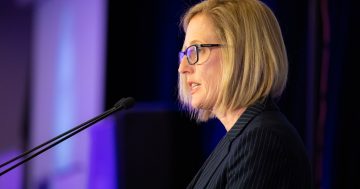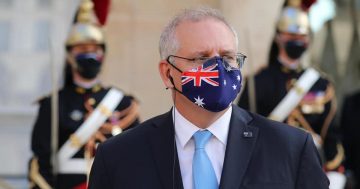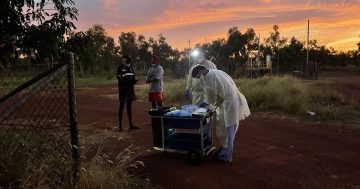
The researchers’ model indicates between 172,530 and 872,799 people will have long COVID symptoms at the end of 2024. Photo: Canberra Health Services.
A recent study found Australian workers living with long COVID cost the economy about $9.6 billion, or one-quarter of GDP growth during 2022.
Researchers from the University of NSW (UNSW), the Australian National University (ANU) and the University of Melbourne calculated the figure on lost labour hours of adults unable to work or forced to work reduced hours because of ongoing COVID-19 symptoms up to 12 months after their initial diagnosis.
They estimated up to 1.3 million Australians were living with long COVID during the September 2022 peak of the COVID-19 pandemic. About 55,000 were children (aged four and under) ineligible for vaccination.
ANU Professor Quentin Grafton said the health and economic burden of long COVID in Australia was significant.
“Workers experiencing ongoing COVID-19 symptoms months after their initial diagnosis resulted in, on average, about 100 million lost labour hours in 2022,” he said. “This is equivalent to an average loss of eight hours per employed person, per year, including both full-time and part-time employment
“Our research likely underestimates the economic impact of long COVID because it does not account for losses such as healthy employees who can’t work because they’re caring for others with long COVID.”
Scientists looked at the number of COVID-19 infections in Australian from January 2022 to December 2023 and used data from 5185 working adults aged 18 and over.
This research helped develop a mathematical model that calculated the number of people with ongoing COVID-19 symptoms lasting between three and 12 months, as well as those who never recovered from their illness.
In its conclusion, the study calls for a “paradigm shift” from a sole focus on the immediate effects of COVID-19 to prevention and treatment of the disease and long COVID.
Professor Tom Kompas from the University of Melbourne said widening access would have a better impact on long COVID because the greatest burden was on working-age adults.
“The age bracket of Australian workers with long COVID who are impacting the economy the most is those aged 30 to 49,” he said.
“Workers in that age bracket contributed to a loss of 52 million worked hours, or more than 50 per cent of the total labour and productivity lost in 2022.”
Senior author from The Kirby Institute at UNSW, Professor Raina MacIntyre, said current health policy should place a greater emphasis on long COVID as a public health priority.
“Widespread COVID-19 infection means that even a small percentage of chronic COVID-related illness and disability will impact population health, especially working adults,” she said. “Coronary heart disease affects about three per cent of the population and is the leading cause of illness and death in Australia and the world.
“Long COVID is likely to be up there among the leading causes of burden of disease. It’s time we considered long COVID in policy decisions, which currently makes it difficult for younger, healthy people to access boosters or antivirals.”
Other strategies suggested a focus on indoor air quality by improving ventilation and financial assistance through a disability pension for long COVID patients unable to work.





















